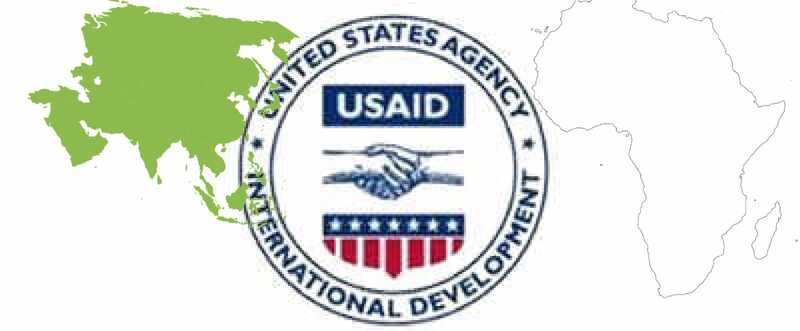 USAID funding for HIV in Asia and Africa. Photo Credits: Pixabay
USAID funding for HIV in Asia and Africa. Photo Credits: Pixabay
Usaid Tide: Tackling The Hiv Crisis In Asia And Africa Amid Funding Challenges
Asia
Business
In a publication released in 2024, Asian countries have been known to be the 3rd largest epidemic countries with HIV infections, after Eastern and Southern Africa. Afghanistan, Bangladesh, Fiji, The Lao People's Democratic Republic, Papua New Guinea, and the Philippines are countries highly affected by the HIV pandemic. In the listed countries, the number of new HIV infections increased by 32% among gay (men-to-men sex) partners and by 85% among non-client sex partners of people from key populations in 2024.
HIV Statistics in Asia and the Pacific
In 2023, a new record revealed that 6.7 million people living with HIV were residing in Asia and the Pacific. The Region accounts for a quarter of annual new HIV infections globally (23%). In Asia, there are 120,000 children aged 0-14 years living with HIV, making up 9% of the total number of children living with HIV globally. Indonesia comprises 26% of the regional total of new HIV infections among children, followed by India 23% and Papua New Guinea 8%.
Declining Funding for HIV Programs
Over the past decade, funding for HIV programs has been decreasing. UNAIDS notes that in the Asia-Pacific region, support for HIV programs by funding has decreased by 2.6 % since 2021–2022. During the same period, the contribution of domestic resources has risen by 47%, increasing the share of domestic resources from 58% of total HIV funding in 2011 to 82% in 2023.
Community-Led Responses and Social Contracting
Empowered communities are essential for the region's HIV response, but community-led responses remain underfunded. Social contracting, whereby the government partners with and procures services from community-led organizations, continues to be a potentially powerful but underused option for reaching people from key populations.
USAID Contributions to HIV Response in Asia
USAID-supported models of community-led services have been well recognized in Thailand and internationally for their significant contributions to more than 50% of the national HIV service uptake in Thailand. USAID has also supported the integration of oral-fluid HIV screening into peer-led outreach for guidelines for HIV self-testing in Laos.
Importance of Sustained Funding and Policy Reevaluations
The sudden stoppage in USAID funding by the US government is a wake-up call for organizations and governments in the Asia-Pacific region and globally to step up in HIV response. With decreased funding in the Asian region, the rate of HIV infection will increase, derailing the plans by UNAIDS to achieve the global target of ending AIDS as a public health threat by 2030.
Research and Prevention Methods
The government in Asian countries should carry out activities such as research to evaluate new prevention methods like vaccines, microbicides, and long-acting formulations of pre-exposure prophylaxis (PrEP) and improve the efficient and effective delivery of HIV prevention, care, and treatment.
HIV Statistics in Asia and the Pacific
In 2023, a new record revealed that 6.7 million people living with HIV were residing in Asia and the Pacific. The Region accounts for a quarter of annual new HIV infections globally (23%). In Asia, there are 120,000 children aged 0-14 years living with HIV, making up 9% of the total number of children living with HIV globally. Indonesia comprises 26% of the regional total of new HIV infections among children, followed by India 23% and Papua New Guinea 8%.
Declining Funding for HIV Programs
Over the past decade, funding for HIV programs has been decreasing. UNAIDS notes that in the Asia-Pacific region, support for HIV programs by funding has decreased by 2.6 % since 2021–2022. During the same period, the contribution of domestic resources has risen by 47%, increasing the share of domestic resources from 58% of total HIV funding in 2011 to 82% in 2023.
Community-Led Responses and Social Contracting
Empowered communities are essential for the region's HIV response, but community-led responses remain underfunded. Social contracting, whereby the government partners with and procures services from community-led organizations, continues to be a potentially powerful but underused option for reaching people from key populations.
USAID Contributions to HIV Response in Asia
USAID-supported models of community-led services have been well recognized in Thailand and internationally for their significant contributions to more than 50% of the national HIV service uptake in Thailand. USAID has also supported the integration of oral-fluid HIV screening into peer-led outreach for guidelines for HIV self-testing in Laos.
Importance of Sustained Funding and Policy Reevaluations
The sudden stoppage in USAID funding by the US government is a wake-up call for organizations and governments in the Asia-Pacific region and globally to step up in HIV response. With decreased funding in the Asian region, the rate of HIV infection will increase, derailing the plans by UNAIDS to achieve the global target of ending AIDS as a public health threat by 2030.
Research and Prevention Methods
The government in Asian countries should carry out activities such as research to evaluate new prevention methods like vaccines, microbicides, and long-acting formulations of pre-exposure prophylaxis (PrEP) and improve the efficient and effective delivery of HIV prevention, care, and treatment.
Senior Editor: Kenneth Njoroge
Financial Expert/Bsc. Commerce/CPA


